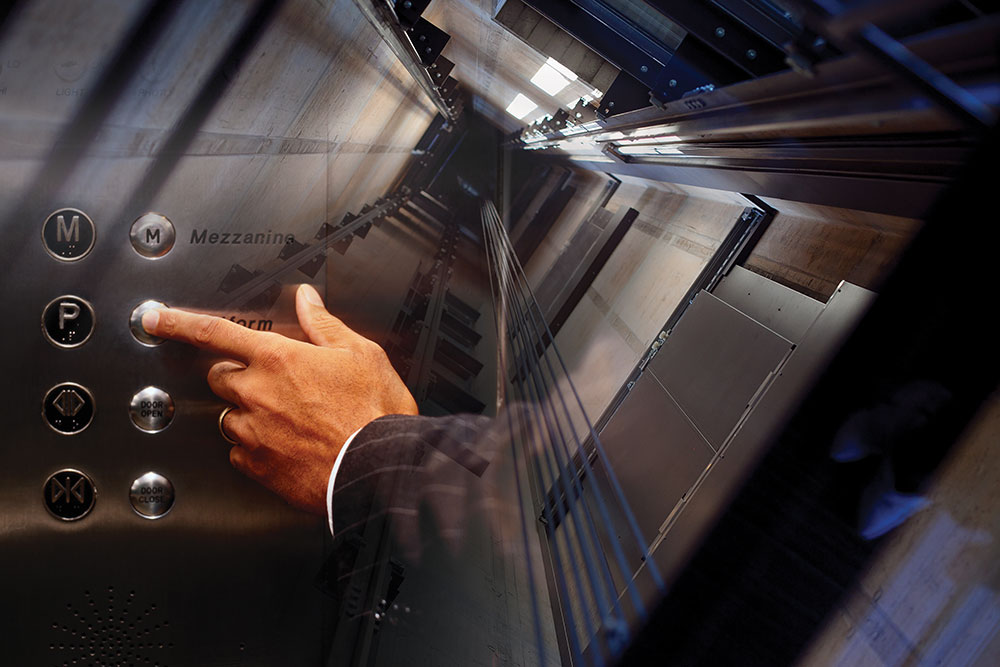See if any of this sounds familiar: you are a mid-size contractor in a mid-to-upper tier building market, and you have a lot of competition. Your company has been around awhile and through sweat, luck and more late nights than you care to count, you’ve managed to carve out a solid reputation in your community. You have thrived through market upswings, survived downturns and hired/fired good and bad people. Finally, today you genuinely feel like the pieces are firmly in place and you are realizing the vision that you had for the company those many years ago.
However, there’s a problem. As good as everything is, you still occasionally find yourself asking, “Ok, so if everything is so great, why aren’t we blowing the doors off the place? Why isn’t there more of a separation between ourselves and our competition?” Though there are likely smaller, more minute reasons entering into the mix, I suggest that the lack of separation you are feeling from your competition may not be so much a product of your company’s abilities as it is how the public perceives those abilities.
However, Mom Always Told Me I Was Special …
Stay with me here. Over the years I have observed that people (and by extension, companies made up of people) tend to accept that the daily growth and hurdles they experience are singular to their own, unique existence. It is certainly always felt that way to me, and I am guessing you feel the same. Though that may be apt on a personal level, I would contend that these same gains, losses, and milestones we overcome in business are not as unique as we would wish to believe. I am also betting that your (and my) local competitors have gone through a surprisingly similar trial of misfires, mistakes, and adaptations while building their enterprises and that we have all come up with pretty much the same business remedies, methods, and protocols. In short, we have all arrived at where we are today along (disparagingly) similar paths. We are not that special.
I am sorry I had to be the one to break it to you.
What’s Your Brand? (Creating a Market Identity)
However, don’t let this revelation get you down. Knowledge is power when used for good, and you can turn this insight to your advantage. Let’s call it a driving force to motivate you to take the necessary next step that will allow your company to truly stand out. So, working from the premise that macro-operations are similar, let’s explore one proven method that has allowed others in your position to finally break away from the frustrating cluster of also-rans: branding.
Most of us associate branding with products but being as we are in a service industry, our service is our product. Moreover, what quality do all successful products share? They are recognizable. You know what you are getting even before the purchase because the company selling the product has taken the requisite time and effort to communicate a clear product identity to the public before the sale. They have formed a brand. However, this was not by accident. These firms spend countless hours and devote vast resources making sure you understand exactly what their product is all about; you need to do the same.
A Plan of Action
Now I am not talking about, for example, just labeling yourself an acoustical ceiling company; too ambiguous and too many of them there. You need to take it to the next level. What type of acoustical ceiling contractor are you? What separates you from the other ten acoustical contractors in your town? What makes you special? Moreover, if you are struggling to get started, here’s a little exercise you can try to gain the proper mindset: take a moment to consider your local/regional building market. Now read the questions below and respond with the first name that enters your head:
- Which contractor in your market do you associate with medical/hospital work?
- What about schools and government buildings?
- Who comes to mind for more complicated site work or civil projects?
The answers themselves are not as critical as the fact that a name likely did come to mind. Moreover, that is not an accident. Those companies have probably spent considerable time and energy to hone their personas. So, what about you? What’s your vision? How do you want the public to view you? Pick an aspect of your company you consider a strong-suit and formulate a plan to let people know you are the go-to company for that service. With dedication and consistency, it will not be long before your business is associated with your chosen genre and you find your word-of-mouth work opportunities (which are HUGE in our business) growing. However, nothing will happen without a solid plan in place, so to further that along, here are a few things to consider as you develop your branding plan:
Make sure everyone in your company is on board with the new brand. I list this first because I consider this the most important step: make sure everyone in your company is on board with the new brand. All employees, from executive level to mail room, should be engaged and knowledgeable regarding your new branding vision. Too many firms ignore this ever so crucial element and then wonder later why the effort faltered. I know it is cliché, but it is true: the best marketing tool you have as a company is your people. If you can manage to get everyone spreading the same clear and enthusiastic message, success will follow. On the other hand, if your message is muddy or half-hearted, the effort is ultimately doomed to wither and die.
Think of your new brand in the terms of a company personality. Just as you care about how others perceive you as an individual, consider how you want the buying public to view your business on a personal level. How do they feel about you? Are you the local underdog, David, setting out to slay the entrenched Goliaths in your market? Are you the high-end, exclusive choice for a discerning clientele (my all-time favorite example of this was with the old Curtis Mathis® Television commercials: “Curtis Mathis, the most expensive television in the industry … and darn well worth it”). Alternatively, perhaps you want to champion your benevolence and dedication to the community; highlight your company goodwill. Whichever personality you choose, if you remain consistent and check in periodically to ensure the message is still in focus, the buying public will form an emotional connection between that message and your company.
Update your company environment to reflect your new brand: including letterhead, logos, signage, truck decals, work clothing – anything that advertises who you are and what is your new brand. This process is the “tinker-toy” part of your brand conversion that helps deliver your message on a more immersive, subliminal level and cements the image of your brand into the minds of the local market clientele.
Stick to it. If your experience is anything like mine, you will not get it entirely right on the first try. This is not unusual. In the classic Edisonian “one percent inspiration and ninety-nine percent perspiration” sense, be prepared to re-visit and re-evaluate your plan along the way. Keep an open mind and listen to the input of not only those around you but your clients as well. Pick a period (quarterly?) to re-visit the plan and to weigh its current effectiveness against the goals and expectations you outlined in the beginning. Oh, and don’t be surprised if this all includes some cheerleading on your part to reinforce your commitment to the effort. It is all part of the process, and the end benefit is worth it.
Go out of your way to reinforce your image as the industry expert in your chosen field. If your goal is to become the go-to acoustical ceiling company for, say, medical work, immerse yourself in that world. Cold-call all the area hospitals, attend medical expositions and trade shows, connect with industry experts and take measures to stay abreast of (in our example) medical engineering and construction innovations. If there is an industry publication/magazine (and there are magazines for just about everything these days!) for your chosen genre, subscribe. Learn and absorb as much as you can about the industry itself, and soon you will be far more confident and at ease the next time you are in negotiations for medical work.
Use your imagination. There are countless ways to get your message across. Here’s an example I came across many years ago that I have never forgotten (and have since seen repeated in other offices): I had a morning meeting with members of an architectural firm in Milwaukee (WI). I was the general contractor, and we were doing a hospital project together. We met in their conference room – my first time in their offices – and during the meeting, I remarked on the dozens of hospital/medical photographs and renderings (past projects of theirs) that covered the walls. I was a little surprised by such a heavily medical-themed display because I had historically known this architecture/engineering firm to be associated with school/university work.
This is where they let me in a little secret. The wall was entirely Velcro®, and it was company practice to customize the conference room according to the meeting about to be held. In my case, it was medical. Moreover, yes, this meant that some poor soul – before my arrival – had been tasked with the wholly unenviable job of un-sticking what existed previously on the walls and replacing them with the company’s stock portfolio of medical/hospital projects. For the 3 PM meeting later that day, it would again be switched to strip malls and retail spaces. Brilliant.
Closing
Of course, in today’s world, it goes without saying to not forget to embrace all things INTERNET. Online content is not optional anymore. The public expects to find you online, and many (most?) will learn virtually everything they know about your company and brand through this one electronic portal. Keep your web identity fresh, take focused measures to ensure it reflects your brand and company philosophy and always keep it engaging and entertaining. Dry and/or unenthusiastic material is the death knell of web advertising. If you run a blog, keep it updated and relevant. Provide hyperlinks to those pertinent industry connections we mentioned earlier. Moreover, of course, provide a messaging vehicle wherein the public can interact with you and your staff. There is no easier and quicker (albeit sometimes hard to hear) way to find out what’s working and what’s not than to listen to those who’ve interacted with your company and people. Good luck!










Find Us on Socials